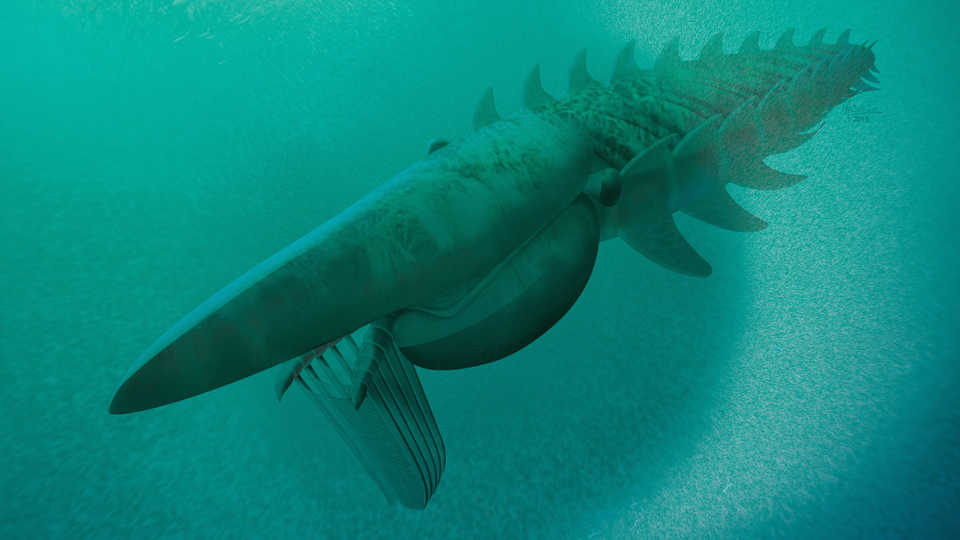Science News
Cambrian Sea Monsters

Do you remember a time before insects? Before plants lived on the land? Before fish, lizards, and amphibians? If only horseshoe crabs and crinoids could share their tales, biologists would have a much easier time piecing together the history of life on our planet.
Instead, they rely on the fossil record to fill in bits and pieces of evolution’s story. It’s an imperfect science: who knows what creatures never got stuck in the mud to be immortalized in the Burgess Shale, or which preserved skeletons were recycled into magma? But science is not for pessimists: for each fossil that was destroyed, there may be hundreds yet to be discovered, just below the surface.
In a letter to Nature this week, some of those hard-working optimists describe a new species of arthropod from the Paleozoic Era that they call Aegirocassis benmoulae. This invertebrate grew to more than two meters, filter feeding on plankton hundreds of millions of years before the first whales did the same in our modern oceans. Biologists Peter Van Roy, Allison C. Daley, and Derek E.G. Briggs learned enough about this species from fossil specimens to place it exactly on the phylogenetic tree near its anomalocaridid relatives from half a billion years ago. Roy, Daley, and Briggs also speculated that the fins and flaps may be proto-limbs that later evolved into the legs used by its progeny to walk on land.
But A. benmoulae tells us about its environment as well. Such a large filter feeder would have needed a sea full of plankton to sustain it during the Cambrian period. A diverse ocean ecosystem must have existed in the Ordovician period, according to the authors. But they suspect that such diversity may not have existed in the early Cambrian immediately beforehand, when smaller predecessors to A. benmoulae swam in the seas.
As we assemble the past through fragments in the present, our planet’s living history can tell us how our ecosystems formed and evolved over the course of millions of years. Collecting and maintaining specimens can even inform new topics in science, as we use the past to speculate about the future effects of climate change and evolution on humans and other life on Earth.
Reconstruction: Marianne Collins, ArtofFact